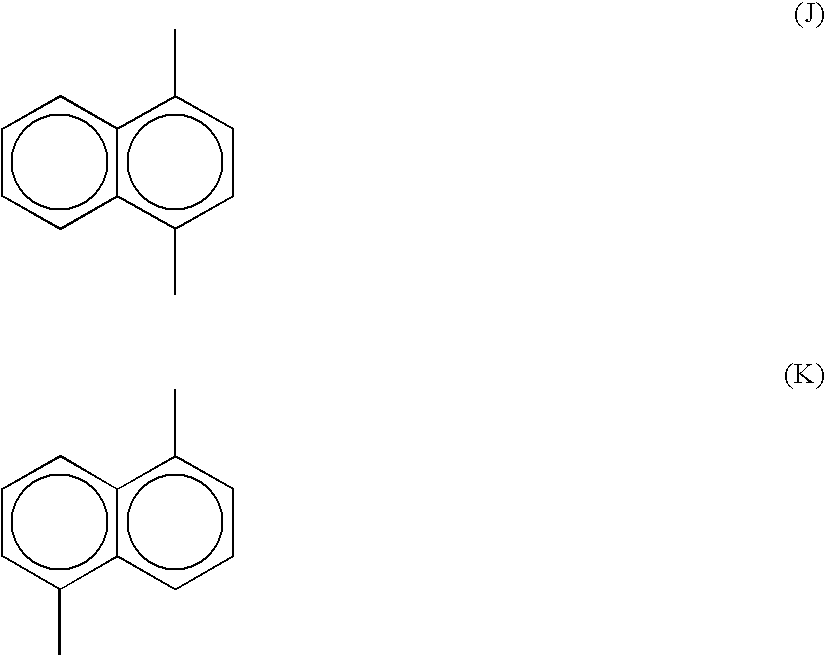Polyarylene Sulfide and its Production Method
a technology of polyarylene sulfide and production method, which is applied in the field of polyarylene sulfide, can solve the problems of high process cost, damage to physical characteristics including electric characteristics, and difficulty in completely eliminating by-product salt by ordinary treatment, and achieves the effect of high purity
- Summary
- Abstract
- Description
- Claims
- Application Information
AI Technical Summary
Benefits of technology
Problems solved by technology
Method used
Image
Examples
reference example 1
Preparation 1 of Polyarylene Sulfide Prepolymer
[0115]To a 70 liter autoclave equipped with a stirrer, 47.5% sodium hydrosulfide 8.27 kg (70.0 mol), 96% sodium hydroxide 2.96 kg (71.0 mol), N-methyl-2-pyrrolidone (hereafter, may be abbreviated as NMP) 11.44 kg (116 mol), sodium acetate 1.72 kg (21.0 mol) and deionized water 10.5 kg were fed, gradually heated up to approximately 240° C. in approximately 3 hours while feeding nitrogen under normal pressure, and after water 14.8 kg and NMP 280 g were distilled out via a distillation column, the reaction container was cooled to 160° C. During this liquid removing operation, 0.02 mol hydrogen sulfide per 1 mol sulfur component fed was diffused outside of the reaction system.
[0116]Next, p-dichlorobenzene 10.3 kg (70.3 mol) and NMP 9.00 kg (91.0 mol) were added, and the reaction container was sealed under nitrogen gas. While being stirred at 240 rpm, it was heated up to 270° C. at a rate of 0.6° C. / min, and maintained at this temperature fo...
reference example 2
Preparation 1 of Polyphenylene Sulfide by Conventional Technology
[0122]To the raw PPS resin 160 g obtained in Reference example 1, NMP approximately 0.25 liter was added and washed at 85° C. for 30 minutes, and filtered by a sieve (80 mesh, opening 0.175 mm). An operation in which the obtained solid substance was diluted with 0.5 liter deionized water, and after stirring at 70° C. for 30 minutes, filtered by 80 mesh sieve to collect the solid substance was repeated 5 times in total. Thus obtained solid substance was hot-air dried at 130° C. to obtain a dried polymer. Absorption spectrum by infrared spectroscopic analysis of the obtained polymer agreed with the absorption of the polyphenylene sulfide prepolymer obtained in Reference example 1.
reference example 3
Preparation 2 of Polyphenylene Sulfide by Conventional Technology
[0123]To the raw PPS resin 100 g obtained in Reference example 1, NMP approximately 0.25 liter was added and washed at 85° C. for 30 minutes, and filtered by a sieve (80 mesh, opening 0.175 mm). An operation in which the obtained solid substance was diluted with 0.5 liter deionized water, and after stirring at 70° C. for 30 minutes, filtered by 80 mesh sieve to collect the solid substance was repeated 3 times in total. Next, the obtained solid substance was diluted with 0.5 liter deionized water to make it a slurry, and acetic acid 0.24 g was added thereto to make the slurry acidic and stirred at 70° C. for 30 minutes and filtered by 80 mesh sieve. The obtained solid substance was diluted again with 0.5 liter deionized water, and after stirring at 70° C. for 30 minutes, washed, filtered by 80 mesh sieve. Thus obtained solid substance was hot-air dried at 130° C. to obtain a dried polymer.
PUM
| Property | Measurement | Unit |
|---|---|---|
| Temperature | aaaaa | aaaaa |
| Temperature | aaaaa | aaaaa |
| Fraction | aaaaa | aaaaa |
Abstract
Description
Claims
Application Information
 Login to View More
Login to View More - R&D
- Intellectual Property
- Life Sciences
- Materials
- Tech Scout
- Unparalleled Data Quality
- Higher Quality Content
- 60% Fewer Hallucinations
Browse by: Latest US Patents, China's latest patents, Technical Efficacy Thesaurus, Application Domain, Technology Topic, Popular Technical Reports.
© 2025 PatSnap. All rights reserved.Legal|Privacy policy|Modern Slavery Act Transparency Statement|Sitemap|About US| Contact US: help@patsnap.com



